The Korean Culture and Information Service (KOCIS), part of the Ministry of Culture, Sports and Tourism (MCST) and publisher of Korea.net, began hosting the “Exploring Korean Humanities Together” competition last year. The event brings together university students from many parts of the world, including Asia, Europe and Africa, allowing them to talk about Korean liberal arts, literature, philosophy and art.
The Korean title of the event is “Cheong-chun In-mun Non-jang Pan.” The word “pan” refers to a gathering of family members, friends or community members where they enjoy food and drink while conversing.
The second “Exploring Korean Humanities Together” competition was held on July 4 in Jecheon, Chungcheongbuk-do Province (North Chungcheong Province), a region that boasts magnificent mountains and rivers that are in harmony across the landscape.
Prior to the competition, there was a preliminary competition where 126 students, both international and domestic, were mixed and paired into a total of 30 teams. Thirteen teams making up 55 students advanced to the finals and competed in the July 4 competition.
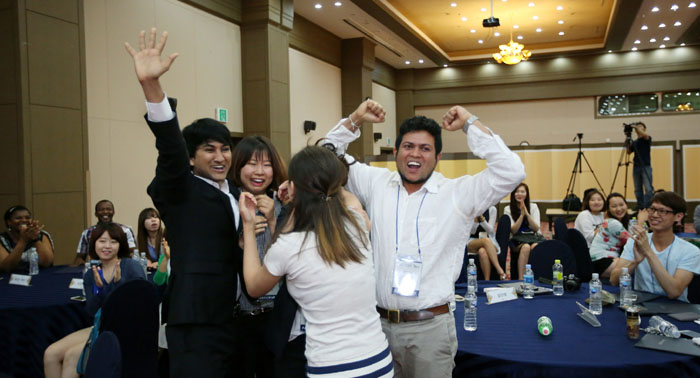
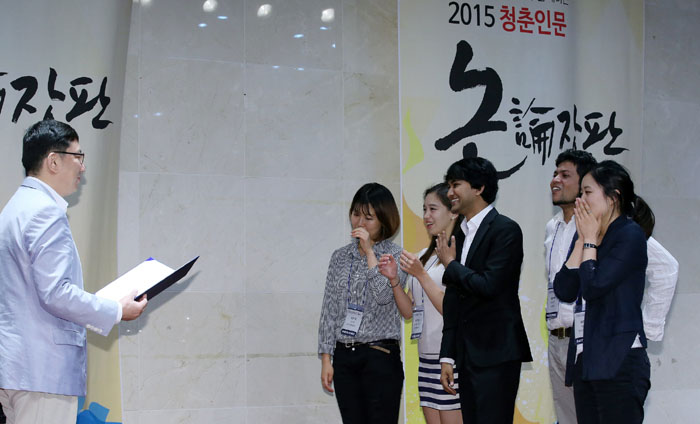
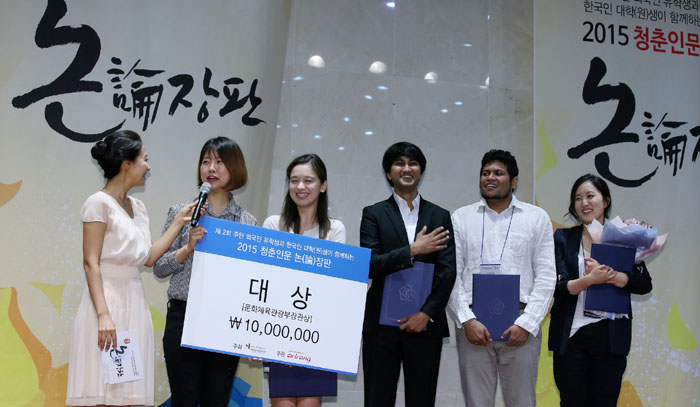
A member of the Eumyangohhaeng team gives an acceptance speech after winning the grand prize, worth KRW 10 million, in the 'Exploring Korean Humanities Together' competition held in Jecheon, Chungcheongbuk-do Province, on July 4. The team, consisting of college students from Korea, Sri Lanka, India and Uzbekistan, gave a presentation on Heo Jun (1539-1615), a court physician during Joseon times.
All the speeches were given in Korean from start to finish. Many students of different colors wowed the audience when they started speaking fluent Korean. Participants spoke about some historic figures from Korean history using a variety of approaches, from giving a theatrical performance to making a video clip. They all showed off their Korean abilities that had been polished over the past few years.
The figures they chose for their speech subjects were much more surprising. Their choices included art collector Chun Hyeong-pil (1906-1962) (전형필, 全鎣弼), the first female doctor in Korea Esther Park (1879-1910) (김점동, 金點童) and diplomat Yi Ye (1373-1445) (이예, 李藝) from early Joseon times, figures of whom even many Koreans have hardly heard.
The most noteworthy point in the competition was that many teams focused on a comparison between their Korean choice and a historical person from their own country. The Laonjena team, made up of four students each from Korea, Azerbaijan, China and Egypt, explored the life of art collector Chun Hyeong-pil, who went by the pen name of Kansong (간송, 澗松). “If there is Kansong in Korea, Azerbaijan has Zeynalabdin Taghiyev (1838-1924), who was willing to lavish his entire wealth on some of the cultural assets that were plundered by the Soviet Union to bring them back to where they belong,” Laonjena members said during their speech.
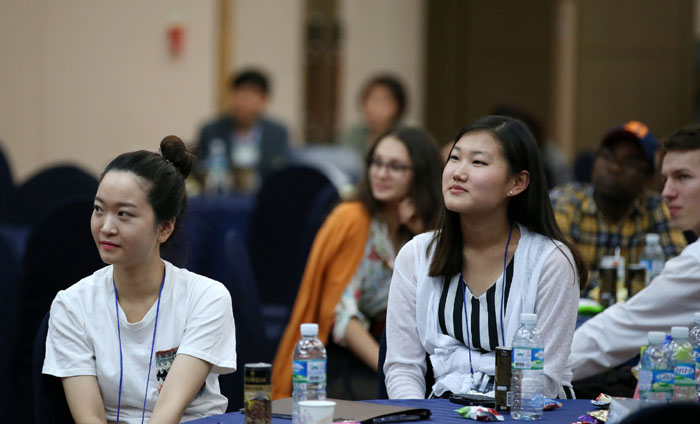
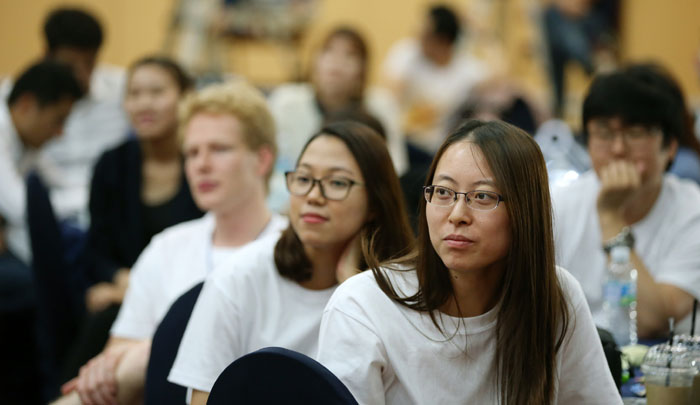
Participants in the 2015 'Exploring Korean Humanities Together' competition listen as other students give their speeches.
Another four-person team, Hwawon4, with members from Korea and Malaysia, shed light on one of the leading painters of Joseon times, Kim Hong-do (1745-1806) (김홍도, 金弘道), who went by the pen name Danwon (단원, 檀園). The focus was on the painter’s works and the way he painted, which, they said embodied the “beauty of space,” or the “beauty of emptiness.” In particular, the students compared the Joseon painter with Malaysian painter Mohd Hoessein Enas (1924-1995) who, they said, drew similar paintings to some of Kim’s.
The grand prize went to the Eumyangohhaeng team, which explored Heo Jun (1539-1615) (허준, 許浚), the Joseon court physician who published the "Mirror of Eastern Medicine" in 1613 (Dongeuibogam, 동의보감, 東醫寶鑑). It is a historical tome on herbal medicine and is one of the classics of Oriental medicine. Members of the team included Wijetunga Chandanashrinath, a Sri Lankan student at Seoul National University, Kumar Srijan from India, Yuldasheva Shakhlo from Uzbekistan and Kim Do-hee from Korea, all students at Kyung Hee University, and, lastly, Park Hyun-seon from Korea, a student at Korea University.
In their presentation, they spoke highly of the spirit and sense of duty that defined Heo Jun as a great doctor. In particular, a parody of the SBS soap opera “My Love From the Star,” which stars an imaginary Heo Jun, was performed, setting the audience roaring with laughter.
“With the ‘Mirror of Eastern Medicine,’ a volume that documented medical information in a storytelling manner to help readers get an easy understanding of it, Heo Jun approached his patients with affinity. His wit and sense of humor breaks him away from being one of those typical doctors who always sport a solemn look on their face,” said the students. The Uzbekistani student also said that, “Heo Jun was the type of doctor who not simply treated patients, but also could change the life of his patients.”
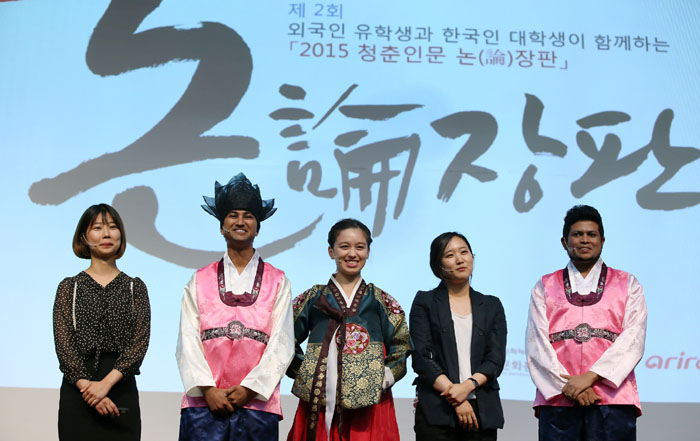
The five-member Eumyangohhaeng team, the winner of the competition, gives a presentation about Joseon court physician Heo Jun (1539-1615).
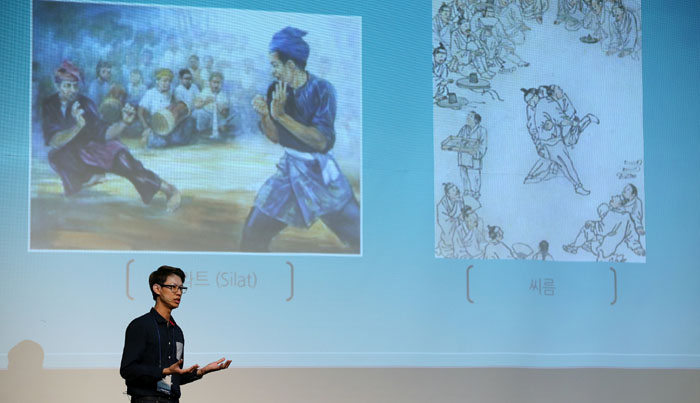
Kevin Wong Wai Hoong, a Malaysian student at Seoul National University, compares Joseon painter Danwon (1745-1806) with Malaysian painter Mohd Hoessein Enas (1924-1995), during the 2015 'Exploring Korean Humanities Together' competition on July 4.
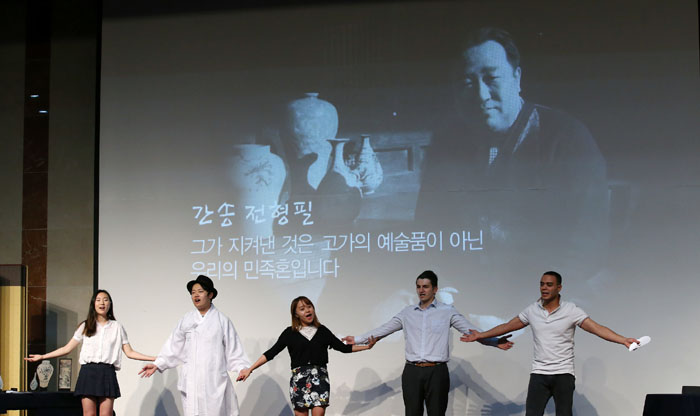
The Laonjena team, with members from Korea, mainland China, Azerbaijan and Egypt, focuses on art collector Kansong (1906-1962) in their presentation.
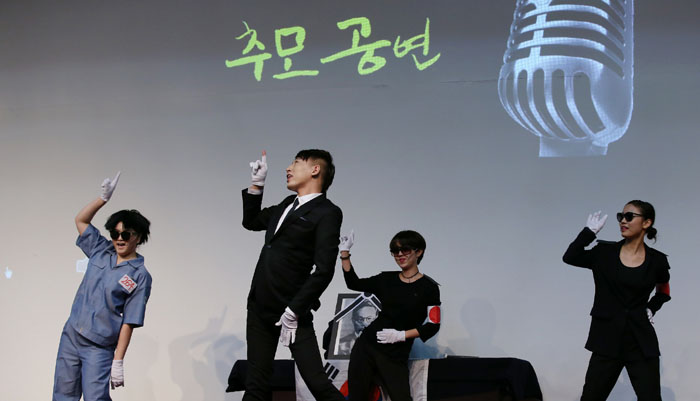
The Dodream team, made up of students from Korea, Mongolia and mainland China, emphasizes the deeds of independence activist and poet Yi Yuksa (1904-1944).
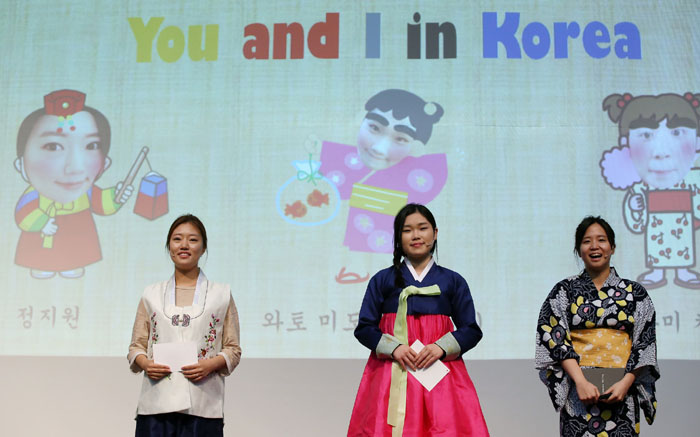
The UNIK team, comprised of Sungkyunkwan University students from Korea and Japan, sheds light on Joseon diplomat Yi Ye (1373-1445). The Japanese students, Wato Midoriko (center) and Shranami Chiharu (right), say, “Studying Yi Ye gave us an opportunity to look at our country from Korea’s point of view. What we hope for in the future of Korea-Japan relations is that the two nations will understand each other and establish closer ties based on mutual understanding.”
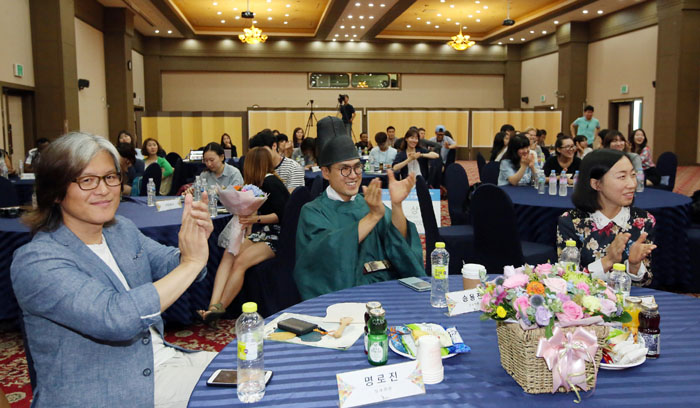
The panel of judges gives a round of applause after a presentation. Myeong Ro-jin (left), one of judges at the 'Exploring Korean Humanities Together' competition, says, “I am here today to judge participating students. Personally, however, the students gave me a lot of lessons. I am really impressed to see non-Korean students present speeches in Korean. I feel the power of cross-cultural relationships. I believe that the friendships kindled among students today serve as the best form of diplomacy.” He hopes that in the future more events of this kind will take place more frequently.
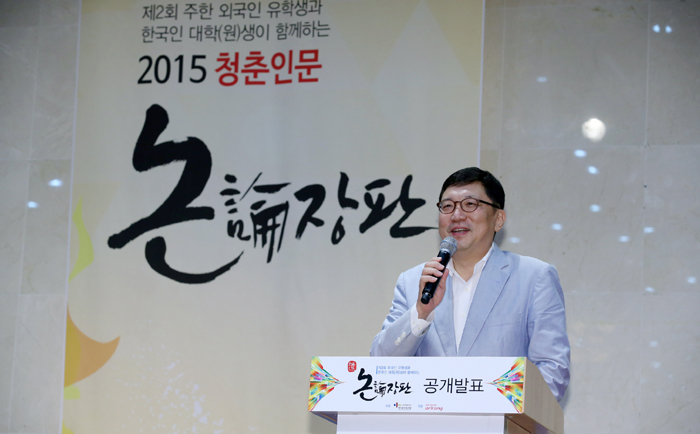
KOCIS Director Park Younggoog gives words of gratitude to the participating students for their keen interest in Korean history, literature and art.
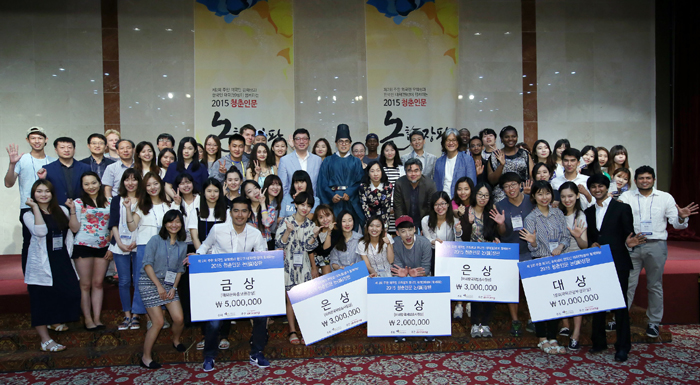
Participants worked on their team projects over the past few months in preparation of the 2015 'Exploring Korean Humanities Together' competition, building friendships with each other.
“Each of the presentations here today has been extremely interesting, holding our attention from the very beginning,” said KOCIS Director Park Younggoog during the award ceremony. “I offer my heartfelt appreciation to all of you for your efforts to make such difficult historical subjects interesting and easy to understand. You did a wonderful job,” he said.
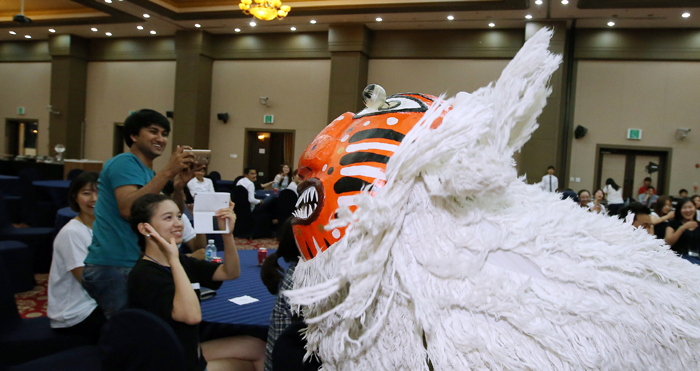
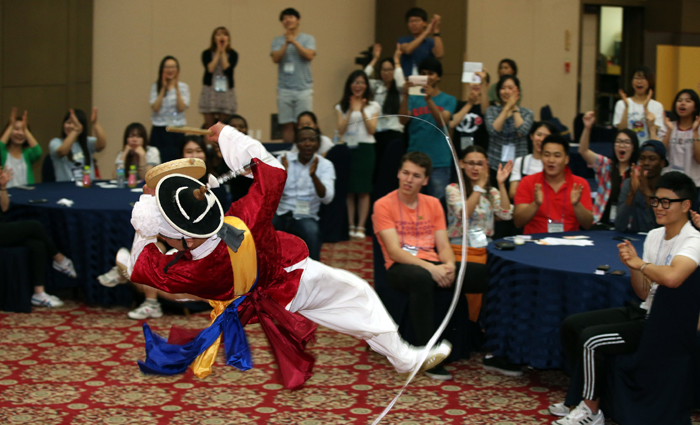
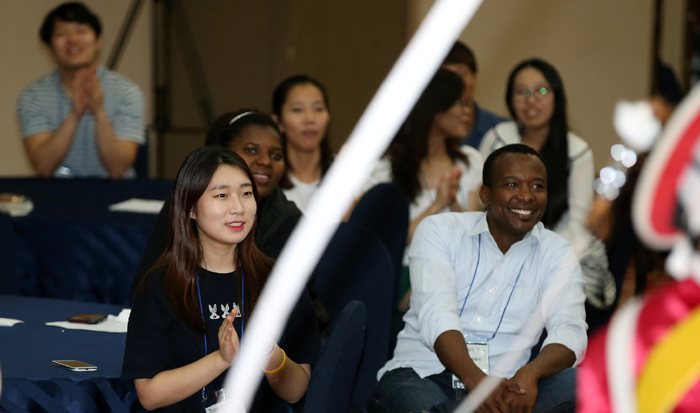
Participants in the 2015 'Exploring Korean Humanities Together' competition enjoy a traditional samulnori percussion performance after the contest.
By Sohn JiAe
Photos: Jeon Han
Korea.net Staff Writers
jiae5853@korea.kr